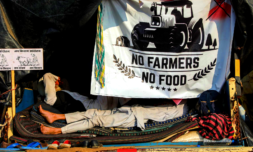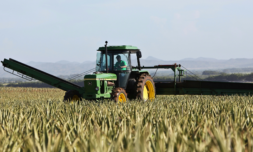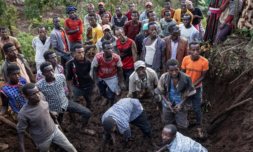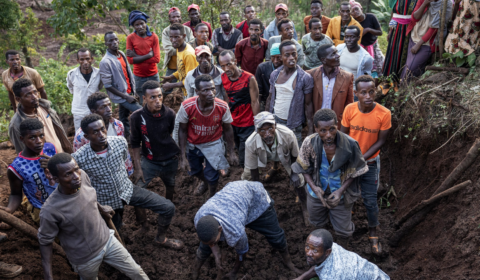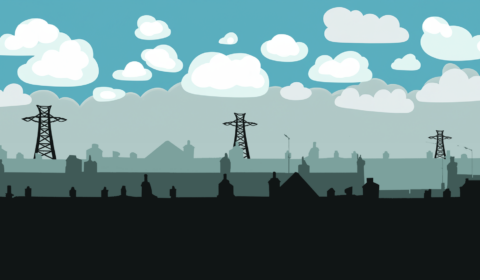Outside the barricaded checkpoints in Delhi, tensions between farmers and authorities have reached fever pitch. The level of response to the grievances has been unwarranted and cruel.
Seventy-one-year-old Jaspal Singh, who lives near the India-Pakistan border in Punjab’s Tarn Taran district, sustained a leg injury during farmers’ protests at the Shambhu Barrier. ‘I have never seen brutality of the kind I have encountered at the Shambhu Barrier,’ he said from his hospital bed.
Singh had joined the farmers marching to the capital to demand the repeal of controversial agricultural laws when police forces unleashed a barrage of tear gas and smoke grenades.
Jaspal has a lacerated wound on his right leg and is being treated at the emergency ward of a government hospital in Rajpura town. He was part of the protesting crowd standing half a kilometer from the heavily guarded barrier when a tear gas shell dropped by a drone hit him. ‘I lost consciousness for a few minutes. Then I was brought here for treatment,’ he said.
The Shambhu Barrier, where farmers gathered as part of their ‘Delhi Chalo’ protest only to be stopped by Haryana security forces, is near Rajpura. Many injured farmers have been admitted to the Rajpura hospital since tension began at the barrier on February 13.
Footage shot by on-ground protests showed drones dropping tear gas shells directly into crowds, reminiscent of Israeli military tactics of suppressing Palestinian protests.
According to eyewitness accounts, over 4,500 tear gas shells were launched in 10 hours on Tuesday, averaging around 350 shells every 30 minutes. Meanwhile, reports of beatings, unlawful detention, and torture in custody have become commonplace.
Jaspal added that he also participated in the 2020 farmers’ protests but police brutality was never so extreme. ‘Is peaceful protest a crime now? Don’t we have the right to protest for our legitimate rights?’ he asked.
A multi-pronged crackdown
Beyond Punjab and Haryana unions, farmer organizations from Uttar Pradesh, Rajasthan, and Madhya Pradesh are joining the Delhi march to demand government aid for India’s agriculture sector, critical to food security.
Groups leading the protests include the Samyukta Kisan Morcha (SKM), Kisan Mazdoor Morcha (KMM), and Kisan Mazdoor Sangharsh Committee. Over 200 farm unions are estimated to participate.
The SKM spearheaded the 2020-2021 protests forcing Modi to repeal controversial farm laws. Now farmers accuse his government of unfulfilled promises, including doubling farm incomes. The SKM has called a national rural and industrial strike to signal farmers’ ongoing discontent.
The aggression witnessed this week, meanwhile, marks the latest in the government’s escalating attempts to suppress dissent among farmers opposing agricultural deregulation.
Thousands of Indian farmers are marching towards New Delhi on tractors and trucks to pressure the government to meet demands like guaranteed crop prices and debt relief. On Tuesday, Haryana police fired tear gas at the farmers to stop them from reaching Delhi, now fortified with barbed wire, cement barriers, and internet suspensions.
The clashes evoke memories of the 16-month farmer protests two years prior. With entry points sealed and gatherings banned, tensions are mounting as the farmers continue their approach to the barricaded capital to voice grievances.
Yet through it all, farmers and supporters have managed to swell up the community, their spirits undampened as they turn sites into makeshift townships in a show of collective resistance.
‘We are fighting a dictatorship hiding behind democracy,’ said a Sikh priest at the site coordinating medical relief efforts. Describing violence long used by the Modi government, he added: ‘The flames only make us stronger.’










